The exhibition Tableaux Vivants, co-curated by Logan Sisley with artist Niamh McCann and currently on display at Hugh Lane Gallery, Dublin, features a selection of works from the collection centred around three recently acquired works by McCann: Sculpture Picture Furniture Gesture #1–3.
In them, McCann restages gestures portrayed in iconic statues of James Larkin and Edward Carson. These gestures reference images from art history ranging from ancient Greek sculptures to religious iconography and instigate a dialogue with selected works from the collection.
Below, Niamh McCann introduces Tableaux Vivants...
'… I turn into
A side street to try to throw off my shadow, and history
is changed'
Ciaran Carson – Turn Again (Belfast Confetti, The Gallery Press)
In the Spring of 2021, I was invited by Logan Sisley, Head of Collections at The Hugh Lane, to co-curate Tableaux Vivants in conversation with Studio and State at the National Museum of Ireland (NMI), Collins Barracks, to commemorate the centenary of the 1921 Anglo Irish Treaty. From the outset, I was excited by this conversation, as it speaks to my own belief that all artworks and cultural artefacts sit within, and arise from, a landscape of context, gathering upon themselves layers of residual meaning that are part artistic intent, part aesthetic, part political influence and part layers of meaning accrued over time.
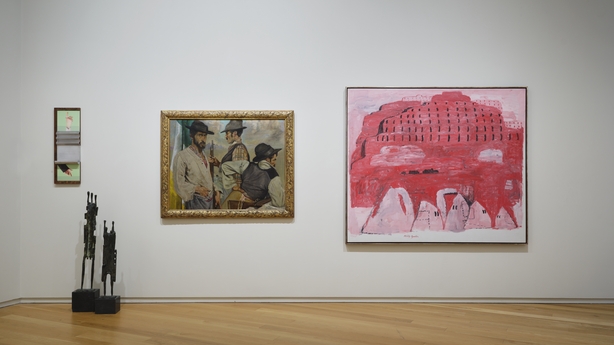
From a personal perspective, the counties North of the Border and The Troubles have, both growing up and throughout my development as an artist, presented as a difficult shimmering presence on the edge of my horizon. As a Dubliner one feels very close and yet distant from the reality and the consequences of a separating border. Within my practice, I have returned many times to the existence of this edge between North and South, to situate works within the geographical and political landscape of Northern Ireland; a landscape that serves to question and foreground assumptions, context and meaning about place, identity and belonging; a landscape that is local and yet connected up to universal concerns.
Most recently, in Sculpture Picture Furniture Gesture #1-3, a series of my works first shown as part of Furtive Tears at The Hugh Lane (2018-19) and since acquired by The Hugh Lane, I explore physical tropes of power and intent within the context of the art artefact (and, by extension, our Island histories) by looking to the subject of the body as it is portrayed in selected historical monuments. Specifically, I look to the iconic statue figures of James Larkin and Edward Carson, taking their famed hand gestures and folding these gestures, in turn, into objects that structurally mimic and point to older visual art histories ranging from Greek marbles to religious iconography.
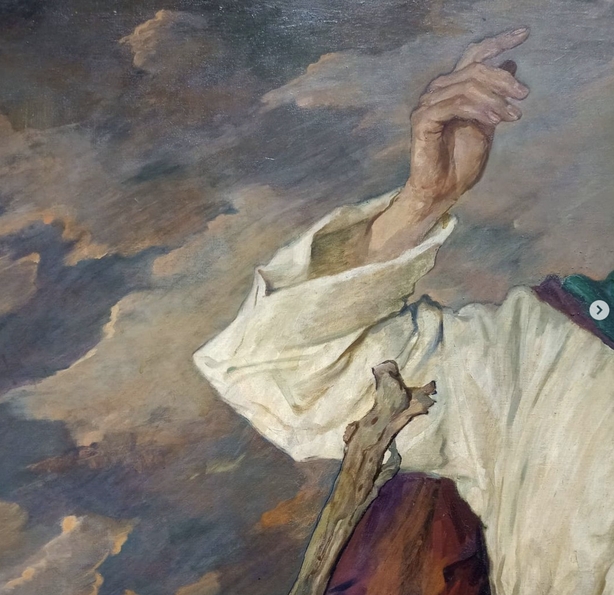
And once again, during the process of selecting works for Tableaux Vivants, I had the time and space to unpick how histories become written, re-coded and abstracted, how they become inferred and held within the artefact, and how individual works held within respective collections become rendered as subjects in relation to the institutionalisation of the border on this island and to the setting up of Irish national and cultural identifiers.
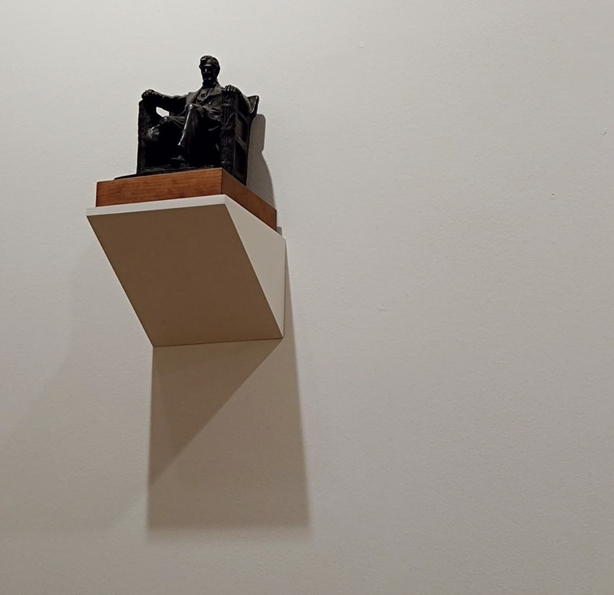
Over many discussions, Logan Sisley and I chose works from The Hugh Lane collections that we believe act in conversation with the NMI exhibition and with the greater question of how artworks speaks to histories, creates histories and uses visual languages to set up and reinforce power dynamics. Loosely, but carefully, we selected works for their contextual significance. We discussed how we might extend and deepen the questions provoked by the NMI exhibition, and offer a contrasting perspective, suggesting figurations as tropes, and revealing the interplay of gestural dynamics, as opposed the more directly intimate narrative suggested by traditional portraiture. We discussed how our selected works would function either in terms of a contemporary response to the Treaty signing and its consequences (as exemplified in the border works of Willie Doherty), or in terms of visual tropes that signal broad gestures of political conflict, such as the adoption of a mask or a gesture as a given shorthand of ideological intent (as signalled in Philip Guston’s hooded figures).
In curating Tableaux Vivants, we honoured the impulse and shared desire to create and unearth the often difficult residues of historical narrative, meaning and power dynamics inherent in the art object.
Our aim was to select works that, viewed side-by-side, offer an opportunity to reflect on the overlapping and sometimes contradictory experiences co-existent at the time of the 1921 Treaty. In Henry Scott Tuke’s painting To the Morning Sun, the Christ-like pose of the light-dappled, joyous naked male figure stands in stark contrast to the solemn tones of Margaret Clarke’s St Patrick Climbs Croagh Patrick. One work speaks forward in time of the politics to come, and the other of ancient landscapes (bringing to my mind, the pre-Christian landscapes of Ireland).
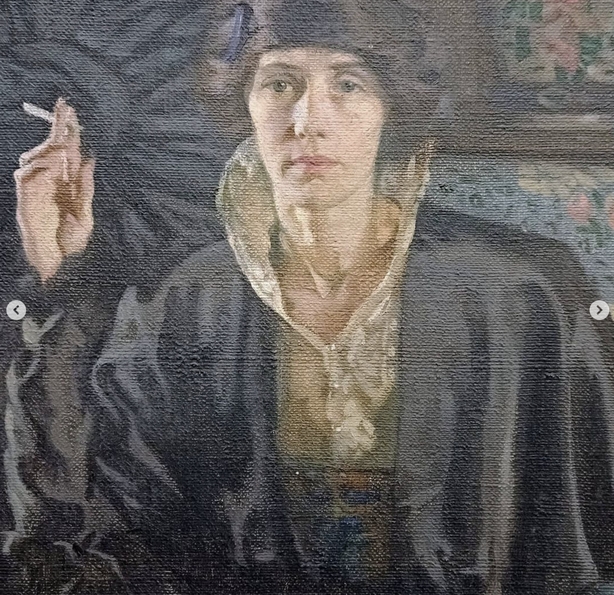
In Lavery’s Blessing of the Colours the problematic story of The Irish State is laid bare. The Bishop blesses the upright flag proffered by the kneeling soldier, who we might read as Michael Collins. In it I see the hope of the nascent State. I also see failures that we are still correcting, the handing over of power from one State to another and the complete absence of the female founders. This painting, in grand political style reminiscent of a Jacques-Louis David, sits alongside the gloriously raucous Isobel Gloag work, The Woman with the Puppets. Gloag’s reclining female nude, head thrown back in laughter, hints at the odalisques of Ingres and Renoir, and holds up her ‘puppet’ male figures in variations of conventional power suits (e.g the lawyer, the banker etc.). These puppets are mere swashes of paint, enough to be recognised as type, but not as individuals. In contrast the female figure is brought forth in luxuriant detail.
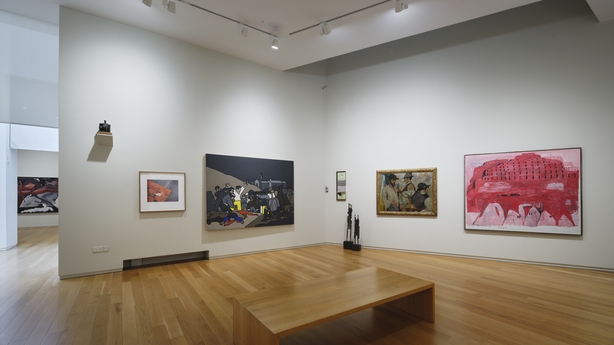
In curating Tableaux Vivants, we honoured the impulse and shared desire to create and unearth the often difficult residues of historical narrative, meaning and power dynamics inherent in the art object. We sought to uncover a personal perspective of the political, suggesting gnarly, uncomfortable and sometimes perplexing or unresolved questions about how our own identities and histories are shaped and reflected by the objects we produce and choose to preserve.
Taken from Studio & State: The Laverys and the Anglo-Irish Treaty, published by Wordwell. Tableaux Vivants is at Hugh Lane Gallery, Dublin until April 24th 2022 and Studio & State continues at Collins Barracks to December 2022 - find out more here.
All works pictured © the Hugh Lane Collection

